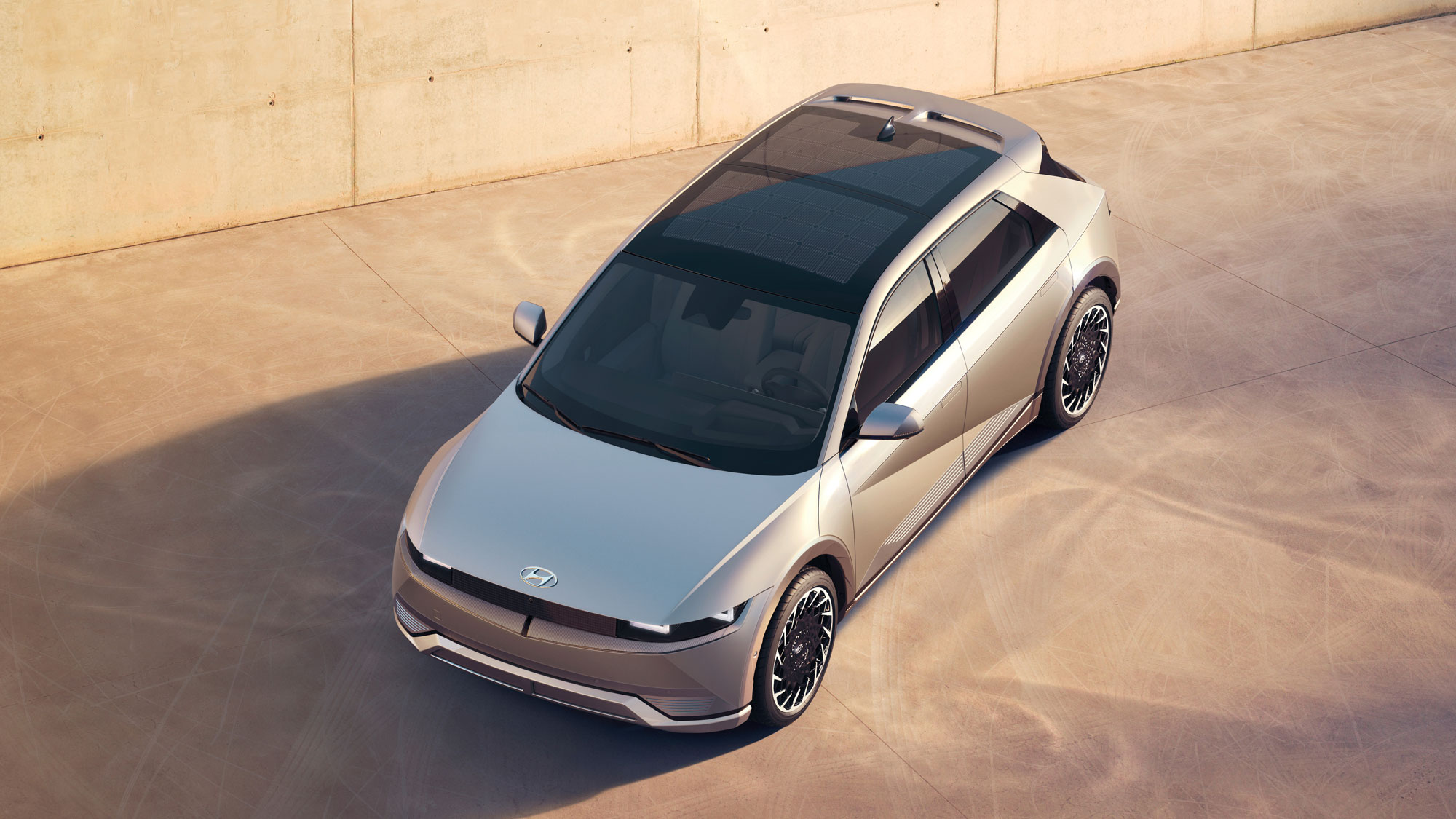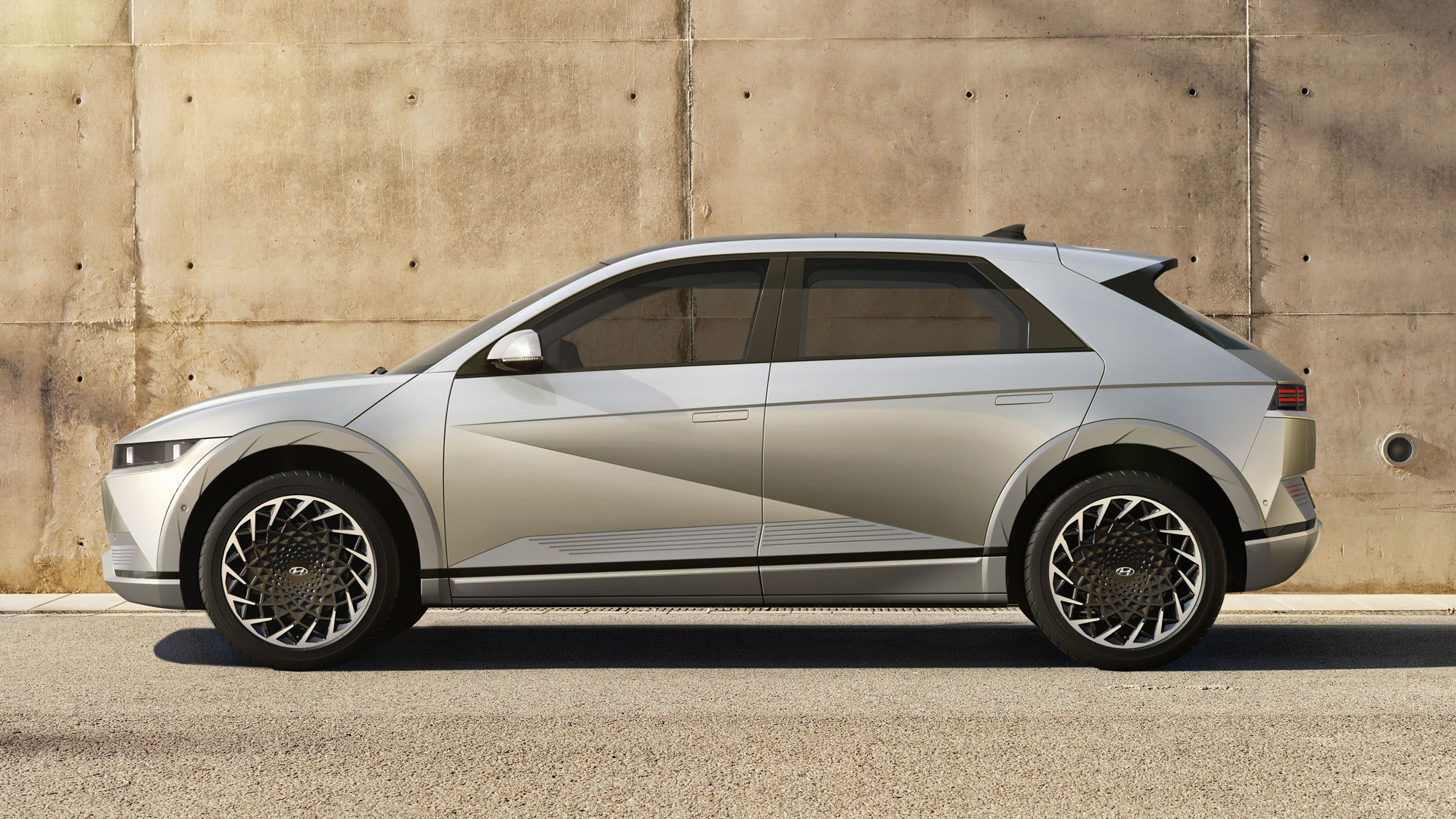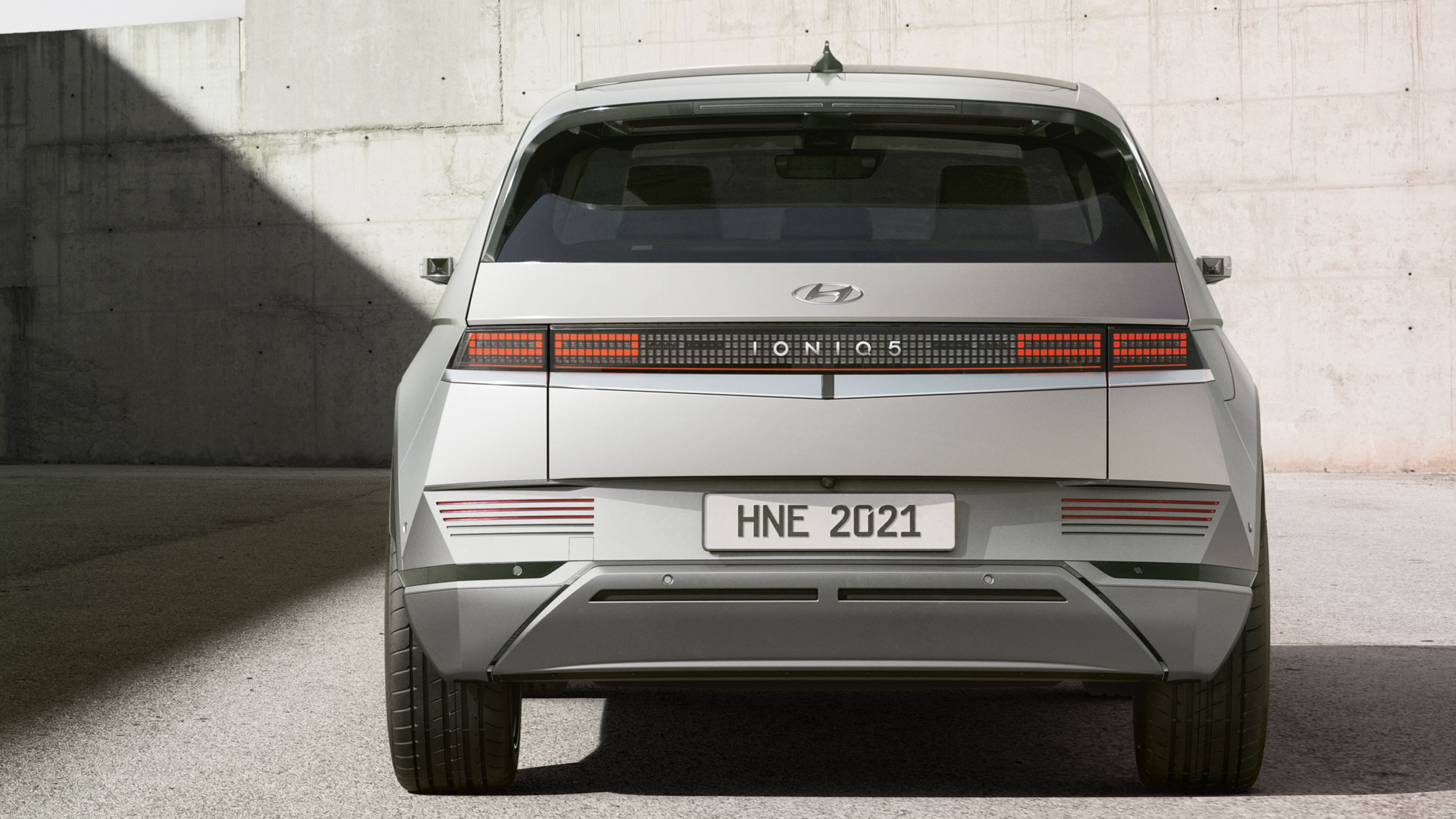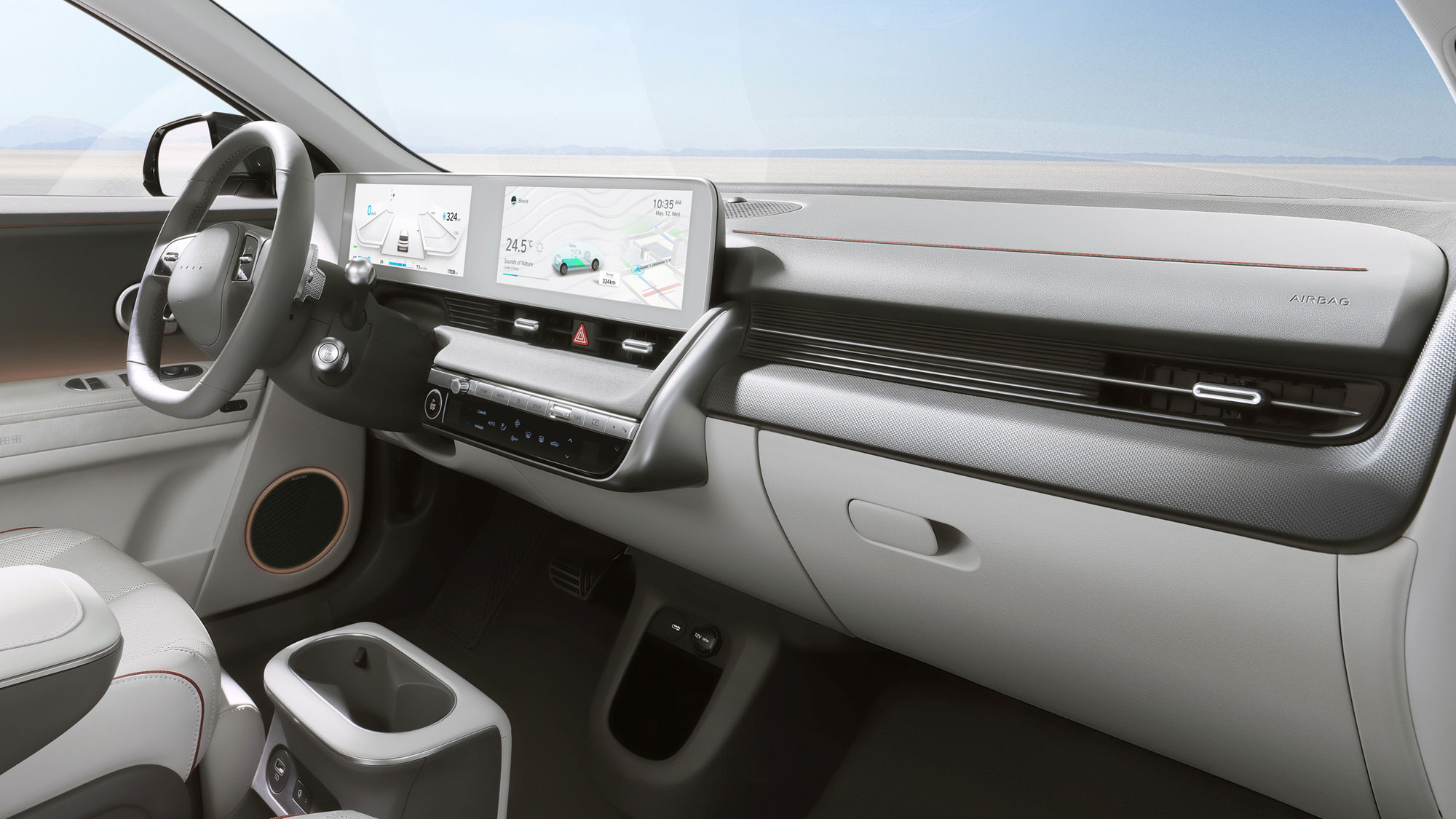The Hyundai Ioniq 5 has been officially announced, and this fully electric, mid-size CUV (crossover SUV) comes with a raft of tech as standard – and even more as options, including solar panels on its roof.
Originally seen at the 2019 Frankfurt Motor Show as the 45 EV concept, the car had seen a few design tweaks to get it to its current form – the Hyundai Ioniq 5.
Its distinctive angular shape is a throwback to the firm's first mass-produced car, the 1974 Pony, and boasts huge 20-inch wheels, a clam-shell hood and eye-catching pixel lights on the front, plus dot matrix lights on the rear.
- Renault Zoe: a zippy electric car made for the city
- Hyundai Kona Electric: an EV that will keep the family entertained
- Audi e-tron: driving the first all-electric Audi
The V-shaped panel below the front lights also illuminates, although you wouldn't know it when the lights are off. The chrome panel is covered in micro perforations, which allow light through when on, but looks like solid metal when off.
However, the most intriguing exterior feature on the new Hyundai Ioniq 5 electric car is found on its roof.

Harnessing the power of the sun
That feature is a solar panel roof option. Unfortunately, it's not available as standard, and right now we don't know how much this optional extra will set you back, but the solar panels cover most of the top of the car.
You won't be able to rely on the sun to fully recharge the 58 kWh standard range or 72.6 kWh long-range battery inside the Ioniq 5, with it acting as a complimentary charging source which can help extend range.
Hyundai says that the solar panels can add up to 2,000km per year (around 5-6km per day) of additional range if it's driven in sunny environments such as Spain or the south of France.



Another fun trick the Ioniq 5 has up its sleeve is the ability to charge other electric vehicles. If its battery level is above 15%, you can plug the new Hyundai into another electric car to charge it.
Once the Ioniq 5's battery depletes to 15%, it will automatically stop charging the other vehicle, so it can preserve a little bit of range for itself.
The charging speed is just 3.6kW, so it's going to top up another car very slowly. But it may well come in useful in places where destination chargers aren't as easy to come by – assuming the Ioniq 5 has enough charge left to get itself to a plug.
It's not just other electric cars it can charge either – with e-bikes, e-bicycles and personal electronics such as laptops also able to take advantage of the reverse charging tech.
Plug in, kick back, relax
As we've already mentioned, the Ioniq 5 will be available with two battery sizes and two drivetrains: AWD (All Wheel Drive) and RWD (Rear Wheel Drive).
There's the standard 58 kWh battery offering up to 200km / 125 miles of range, and the 72.6 kWh long-range battery, which can provide up to 500km / 310 miles on a single charge.
The 800v battery supports superfast charging too, with the Ioniq 5 able to reclaim 100km of range in just five minutes when plugged into a 350kW charger, while 10% to 80% happens in just 18 minutes.
Unfortunately, 350kW chargers aren't all that widespread at the moment, but a 50kW charger will be able to take you from 10% to 80% in an hour – and the Ioniq 5 wants to make sure it's a welcoming place to be while you charge.
| Drivetrain | Battery | Range | 0-100 km/h | Top Speed |
|---|---|---|---|---|
| AWD | 72.6 kWh | TBC | 5.2 sec | 185 km/h |
| AWD | 58 kWh | TBC | 6.1 sec | 185 km/h |
| RWD | 72.6 kWh | up to 500km | 7.4 sec | 185 km/h |
| RWD | 58 kWh | up to 200km | 8.5 | 185 km/h |
In the cabin, those in the front really can kick back and relax with reclining 'Zero Gravity' seats offering ample legroom and additional leg support – designed to make you more comfortable while you wait.
There's plenty of tech inside too, with two 12.25-inch screens sitting on the dash. One is located behind the wheel and acts as a digital instrument cluster for the driver, while the other sits atop the center console and provides access to infotainment, navigation and more.
You can also get a HUD (heads-up display) in the Ioniq 5, which projects important information such as your speed, the current speed limit and navigation directions onto the windshield and into your eye line. This provides a safer way of checking this information, as you don't have to move your eyes off the road.



The Hyundai Ioniq 5 will be available from Spring 2021 (between March and May), with the car landing in the UK in mid-2021, although pricing for this mid-size CUV is yet to be revealed outside of the special edition 'Project 45' Ioniq 5 which costs £45,000 (around $63,000, AU$80,000).
This will likely to be the most expensive model in the range, with the entry-level 5 likely to come in comfortably cheaper.
from TechRadar - All the latest technology news https://ift.tt/3sm8x22
No comments:
Post a Comment